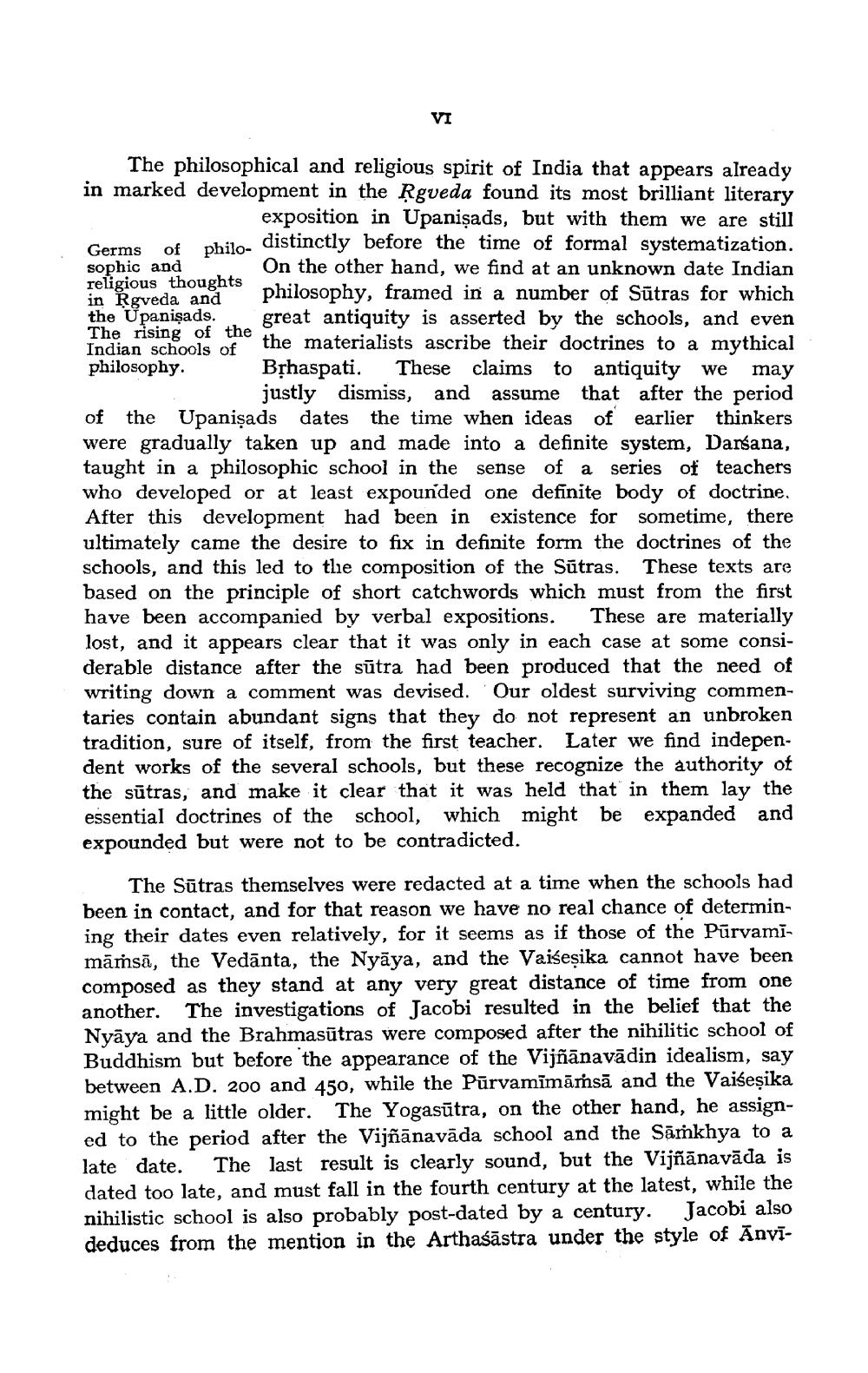________________
VI
1
+
1
The philosophical and religious spirit of India that appears already in marked development in the Rgveda found its most brilliant literary
exposition in Upanişads, but with them we are still
1o. distinctly before the time of formal systematization. sophic and
On the other hand, we find at an unknown date Indian religious thoughts in Rgveda and
philosophy, framed in a number of Sūtras for which the Upanişads. great antiquity is asserted by the schools, and even The rising of the Indian schools of
the materialists ascribe their doctrines to a mythical philosophy Bșhaspati. These claims to antiquity we may
justly dismiss, and assume that after the period of the Upanişads dates the time when ideas of earlier thinkers were gradually taken up and made into a definite system, Dansana, taught in a philosophic school in the sense of a series of teachers who developed or at least expounded one definite body of doctrine. After this development had been in existence for sometime, there ultimately came the desire to fix in definite form the doctrines of the schools, and this led to the composition of the Sūtras. These texts are based on the principle of short catchwords which must from the first have been accompanied by verbal expositions. These are materially lost, and it appears clear that it was only in each case at some considerable distance after the sūtra had been produced that the need of writing down a comment was devised. Our oldest surviving commentaries contain abundant signs that they do not represent an unbroken tradition, sure of itself, from the first teacher. Later we find independent works of the several schools, but these recognize the authority of the sūtras, and make it clear that it was held that in them lay the essential doctrines of the school, which might be expanded and expounded but were not to be contradicted.
The Sūtras themselves were redacted at a time when the schools had been in contact, and for that reason we have no real chance of determining their dates even relatively, for it seems as if those of the Pūrvamimāṁsā, the Vedānta, the Nyāya, and the Vaisesika cannot have been composed as they stand at any very great distance of time from one another. The investigations of Jacobi resulted in the belief that the Nyāya and the Brahmasūtras were composed after the nihilitic school of Buddhism but before the appearance of the Vijñānavādin idealism, say between A.D. 200 and 450, while the Pūrvamīmārsā and the Vai esika might be a little older. The Yogasūtra, on the other hand, he assigned to the period after the Vijñānavāda school and the Sāmkhya to a late date. The last result is clearly sound, but the Vijñānavāda is dated too late, and must fall in the fourth century at the latest, while the nihilistic school is also probably post-dated by a century. Jacobi also deduces from the mention in the Arthaśāstra under the style of Anvī




